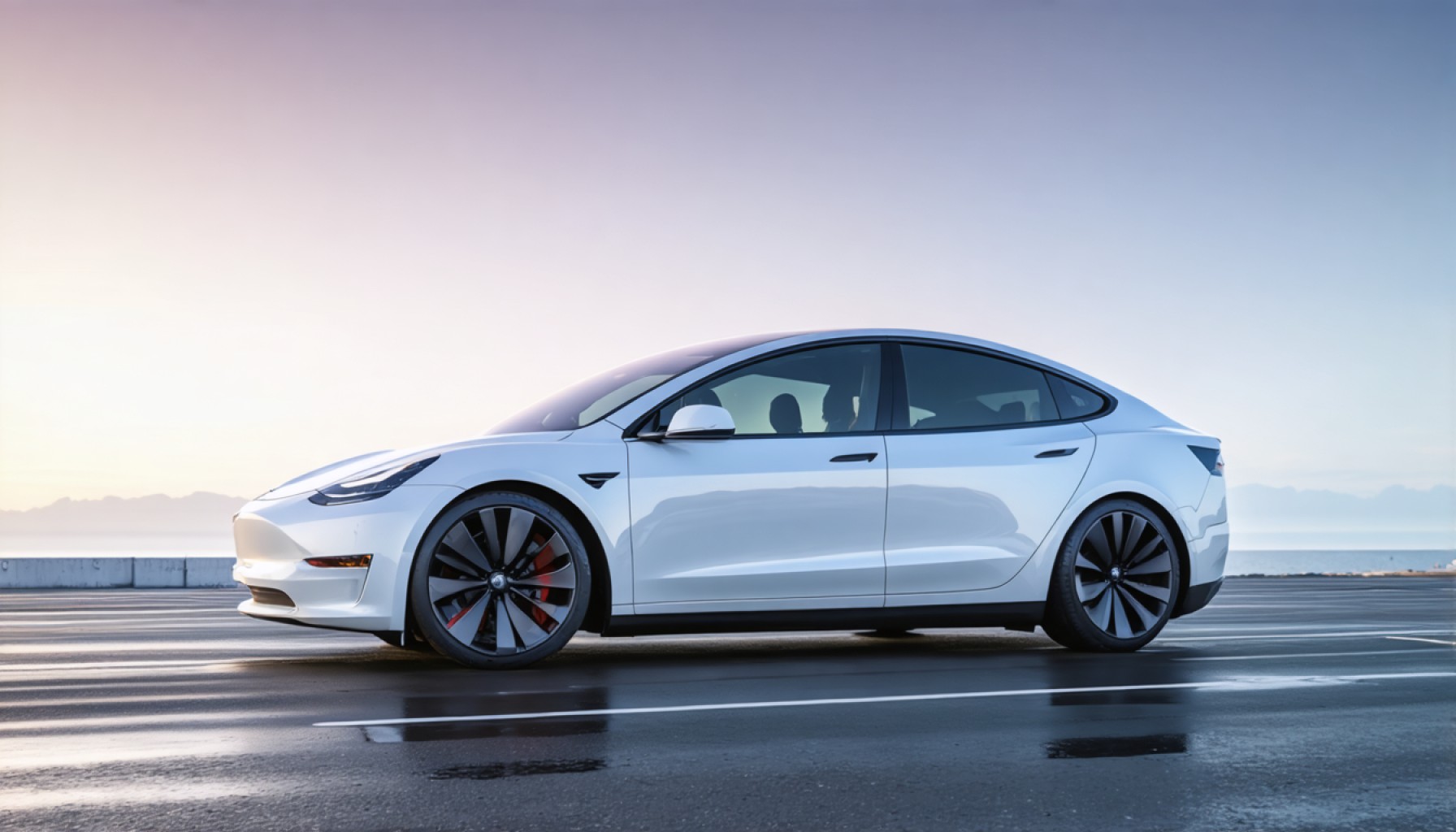- Tesla’s stock dropped 1.8% due to new trade challenges impacting its ambitious projects.
- Key components for the Cybercab robotaxi and Semi trucks face shipping delays from China to the U.S. due to increased tariffs.
- Tariffs imposed by President Trump complicate Tesla’s plans and could delay trial production set for October with full-scale production by 2026.
- The situation underscores the challenges global companies face amid changing trade policies.
- Tesla’s stock has already fallen 37% in 2023, adding financial pressure.
- This development highlights the fragile nature of global commerce and the need for Tesla to adapt its strategies to achieve its innovative goals.
A gust of economic tension has swept across the automotive landscape, threatening to derail a cornerstone of Tesla’s ambitious future. Shares of the electric vehicle behemoth, Tesla, slipped by 1.8% to $249.52 in premarket trading, reflecting the gravity of this new trade challenge. The company, revered for its innovative prowess, now faces a significant roadblock: a suspension in its plans to ship essential components from China to the United States. These parts were destined for the much-anticipated Cybercab robotaxi and Semi electric trucks.
This abrupt change stems from an escalation in tariffs on Chinese goods imposed by President Donald Trump. This policy shift, emerging like a storm on the economic horizon, has added complexity to Tesla’s operations, potentially delaying the commencement of trial production. October was meant to usher in a new era with these models, with full-scale production targeted for 2026. However, the plan now lingers in a state of uncertainty.
Tesla’s CEO, the visionary Elon Musk, had promised the Cybercab would steer the company into a future dominated by self-driving technology and advanced robotics. This was a strategic deviation from Tesla’s earlier focus on making electric cars more accessible. Now, with the tariffs acting as an unexpected barricade, the path to realizing these cutting-edge innovations has become far more intricate.
Throughout 2023, Tesla’s stock has endured a descent, shedding approximately 37% of its value. This latest twist adds pressure to the financial narrative, underscoring the delicate balance global players must maintain amidst economic policy shifts.
At its core, this development serves as a stark reminder of the fragile interconnections that underpin global commerce. As trade policies evolve, even giants like Tesla must recalibrate. The company, no stranger to overcoming challenges with ingenuity and resilience, must now navigate these tariffs, reshaping strategies to fulfill its vision of revolutionizing the automotive world.
Tesla’s Trade Trouble: What Does the Future Hold for EV Innovator?
Understanding the Impact of Tariffs on Tesla
Tesla, a leader in electric vehicles (EVs), is facing a substantial headwind with new tariffs on Chinese imports. This development is critical as it threatens to disrupt the supply chain for key components in Tesla’s future projects, notably the Cybercab robotaxi and Semi electric trucks. Here’s an in-depth exploration of this challenge and its potential outcomes.
The Current State of Tesla’s Operations
1. Tariff Impact: The tariffs, introduced during Donald Trump’s presidency, impose higher trade costs on Chinese imports. This not only affects Tesla’s bottom line due to increased expenses but also potential delays if Tesla needs to find alternative suppliers or renegotiate terms.
2. Stock Market Reaction: Tesla’s stock has experienced a decline, falling 1.8% to $249.52 in premarket trading recently. Overall, there’s been a 37% decrease in stock value throughout 2023, reflecting broader investor concerns over the company’s capacity to manage these economic hurdles.
Immediate Strategic Implications
– Production Delays: The tariffs are likely to push back trial production schedules initially set for October. This postponement could impact Tesla’s competitiveness and market momentum, particularly as rivals are also advancing rapidly in the EV space.
– Cost Management: Tesla must evaluate alternative sourcing strategies, possibly increasing production costs if parts require procurement from regions with higher labor and manufacturing costs than China.
Real-World Use Cases and Market Forecasts
– Cybercab and Semi Trucks: The market for autonomous vehicles is projected to grow significantly. Tesla’s Cybercab and Semi are poised to capture a share by offering advanced technology. Delays could allow competitors to catch up or even surpass Tesla in this domain.
– EV Industry Trends: As per industry analysis, the global shift towards EVs is accelerating, with significant growth forecasted across Asia, Europe, and the U.S. Policy changes, like tariffs, are factored into the risk management strategies of all major players.
Expert Insights
– Elon Musk’s Vision: Despite setbacks, Elon Musk has consistently navigated complex challenges with innovative problem-solving. Tesla could potentially bypass these tariffs by localizing certain manufacturing processes in the U.S. or negotiating long-term contracts with alternative suppliers.
– Financial Analysts’ Views: Analysts suggest cautious optimism; while tariffs introduce setbacks, Tesla’s strong brand and technological advantages could provide resilience to these economic shocks.
What Could Tesla Consider?
1. Develop Local Supply Chains: Diversifying the supply base within the U.S. could mitigate tariff impacts, though it may require significant investment initially.
2. Negotiation with Regulators: Engaging in dialogues with policymakers could result in adjustments or exemptions that lessen the tariff burden.
3. Strategic Partnerships: Collaborating with other auto manufacturers or tech firms could provide shared resources for overcoming trade disruptions.
Conclusion: Navigating the Road Ahead
Tesla’s visionary objectives face significant challenges due to these tariffs. However, its history displays a pattern of strategic pivots to overcome such barriers. For stakeholders and investors, maintaining confidence in Tesla’s capability to adapt and innovate remains crucial.
Quick Tips for Tesla Observers:
– Stay Informed: Keep abreast of trade policy developments and Tesla’s strategic updates.
– Diversify Investments: Consider the positions in the EV market with an eye on other rising manufacturers.
– Watch for Partnership Announcements: These could signal shifts in Tesla’s strategic approach to overcoming tariff obstacles.
Learn more about Tesla’s future ambitions and the evolving automotive landscape by visiting their official page: Tesla.
